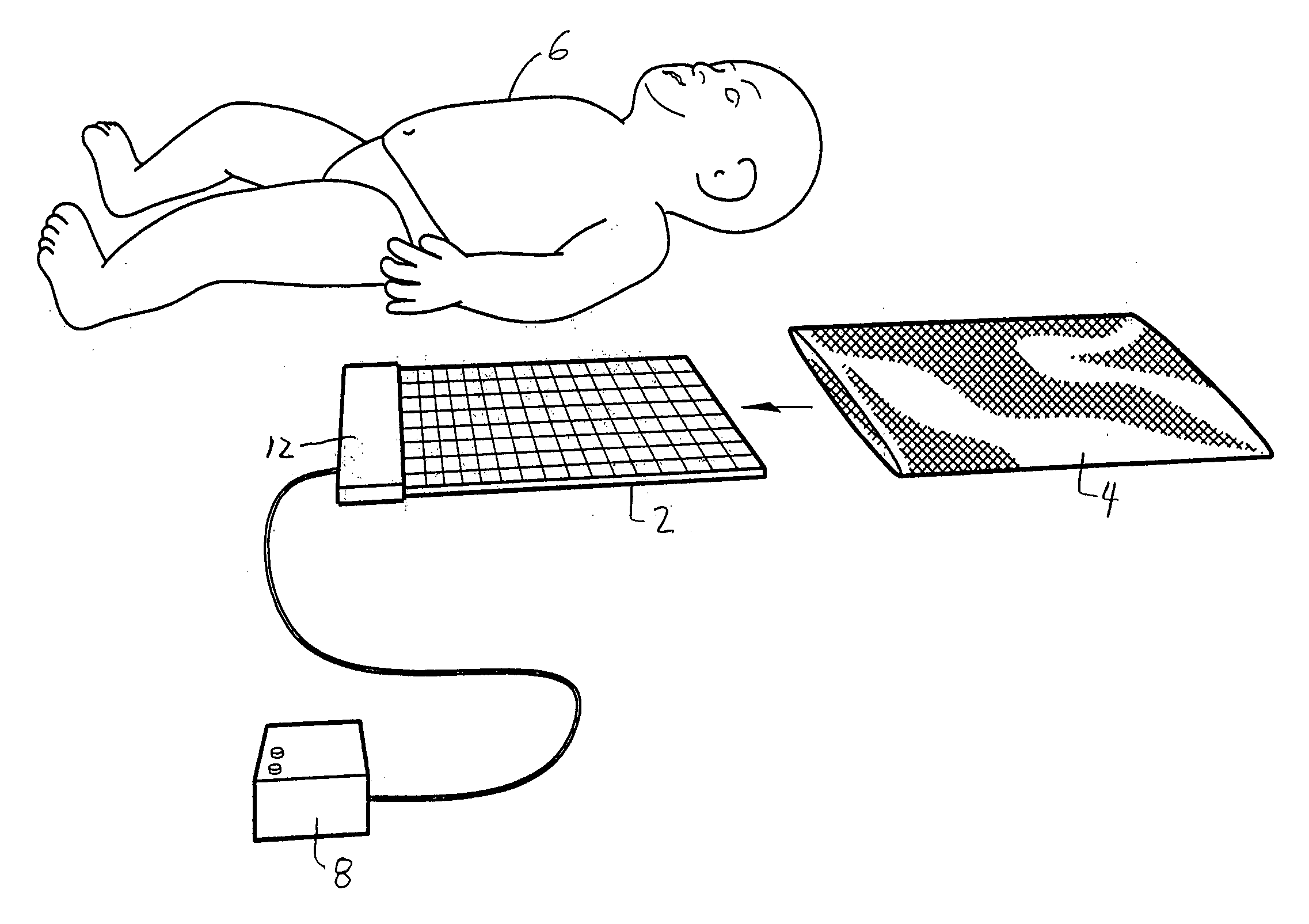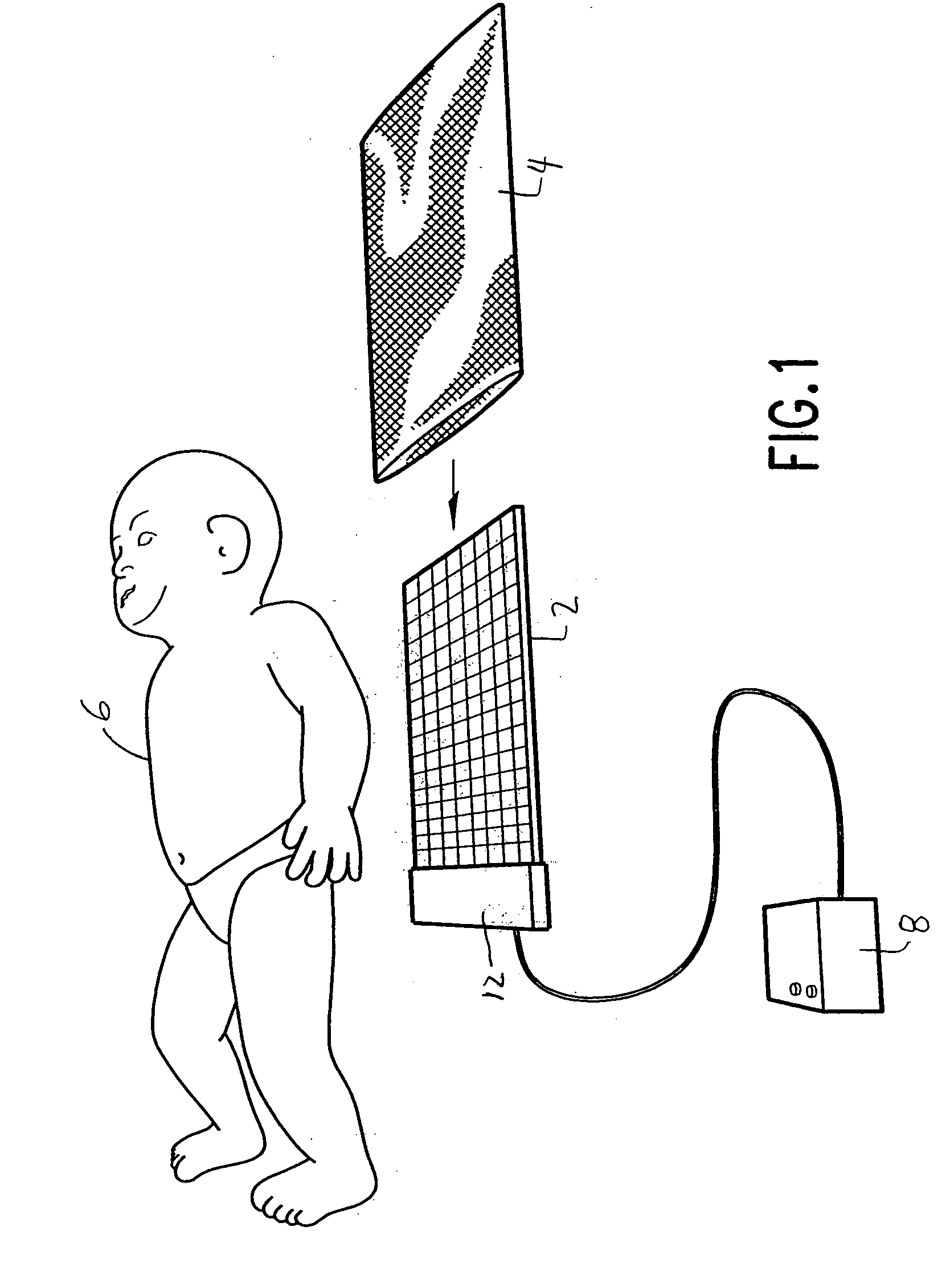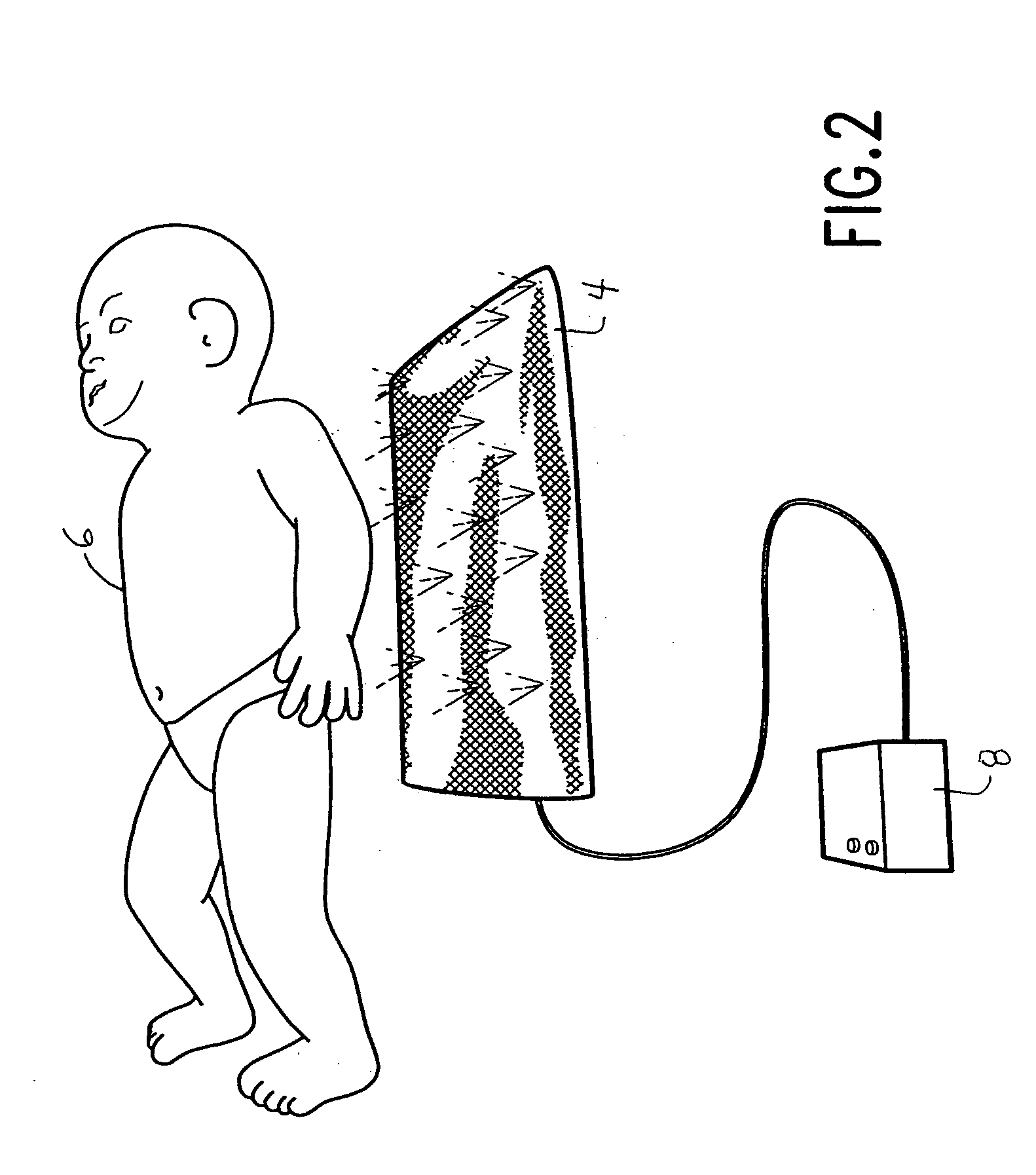Device and method for phototherapy of jaundiced infants
a technology for jaundiced infants and devices, applied in the field of phototherapy treatment methods and devices, can solve the problems of bilirubinemia, bilirubinemia persisting high levels, and death, and fluorescent lamps generate significant hea
- Summary
- Abstract
- Description
- Claims
- Application Information
AI Technical Summary
Benefits of technology
Problems solved by technology
Method used
Image
Examples
Embodiment Construction
[0012] Although the following detailed description contains many specifics for the purposes of illustration, and variations and alterations to the following details are within the scope of the invention. Accordingly, the following embodiments of the invention are set forth without any loss of generality to, and without imposing limitations upon, the claimed invention.
[0013]FIG. 1 shows the phototherapy panel 2 with a cover 4. The panel is preferred to be slightly larger than the length of the back of an infant 6. A power supply unit 8 powers the device. As shown in FIG. 2, the sheath allows the light transmitted from the panel to be transmitted through the sheath to the infant's back.
[0014] In one embodiment, the phototherapy panel comprises a flexible backing material, a transparent liner, and a flexible circuitry substrate, with light emitting diodes (LEDs) mounted to the flexible circuitry substrate and conductively connected to a power supply. An infant 6 is placed over the pa...
PUM
 Login to View More
Login to View More Abstract
Description
Claims
Application Information
 Login to View More
Login to View More - R&D
- Intellectual Property
- Life Sciences
- Materials
- Tech Scout
- Unparalleled Data Quality
- Higher Quality Content
- 60% Fewer Hallucinations
Browse by: Latest US Patents, China's latest patents, Technical Efficacy Thesaurus, Application Domain, Technology Topic, Popular Technical Reports.
© 2025 PatSnap. All rights reserved.Legal|Privacy policy|Modern Slavery Act Transparency Statement|Sitemap|About US| Contact US: help@patsnap.com



